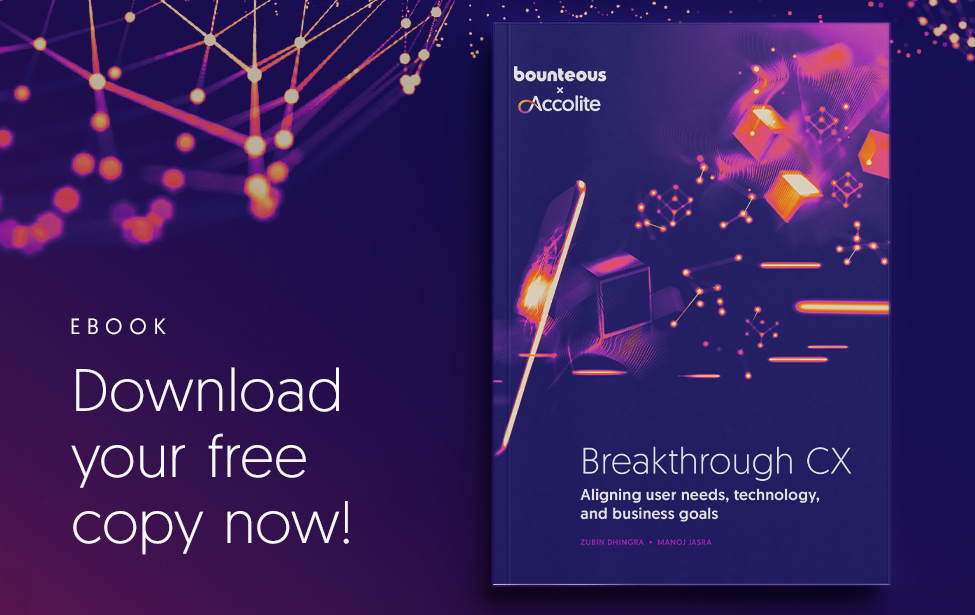Boost Your Efficiency with an Information Architecture Strategy for Digital Asset Management

One of the key objectives for businesses shifting to digital is making things better and faster. And one of the key questions is, how?
A digital asset management (DAM) system such as Adobe Experience Manager (AEM) Assets could be the answer for your business. DAMs can deliver on a very strong promise: all of your assets—copy, creative, video, inventory, and more—in one location. That’s right, one source of truth. One place to go. In a recent post, Tom Cotter talked through the technical and high-level business benefits of a DAM. When companies employ a DAM and build processes around it, they can move a lot faster.
In our experience, one of the most critical parts of a successful DAM implementation is the information architecture (IA) of the assets themselves. We’ve previously discussed how information architecture is critical for digital success. Developing an IA strategy for your DAM acts as a turbo boost for your business goals. Here’s how.
Start Making Sense
The heart of IA is about sensemaking: ensuring the digital places and spaces we create truly make sense to everyone. Yet, different departments and different people will have different reasons for needing assets. For example, if I’m creating a landing page, I might need photography that aligns with our brand from our annual photo shoot; if I’m a developer, I might need a version of an icon that’s ready to go for mobile.
Our needs are different even if the assets are the same, and so, the labels and terms for our folders and metadata need to be relatable, understandable, learnable, and even intuitive. To a person familiar with a particular set of assets, a folder named, “2019_ARQ LORES_PRINT CAMP FINAL,” might make sense. But saying “2019 Audiobook Campaign” might make sense to more people—and be more readable, too!
It sounds simple, but starting by understanding how people work with assets and how they describe them in their own words through direct user research can be a gamechanger. That’s why our DAM IA Strategy work starts with workshops and discussions with the people who use these systems. It gives our team a sense of how people navigate what they’re using today, provides insights into ways things can be better, and gives them a stronger sense of ownership.
Building the Structure
What’s next? Well, that almost-seamless collaboration continues when we further analyze and synthesize how assets are managed today and where we want to take them tomorrow. Building on those workshop activities, we start to piece out what the folder hierarchy can look like and what items will make more sense for a taxonomy.
The folder hierarchy gives people who browse a DAM a sense of place and order. (Hint: That’s now just about everyone in the organization!). Consider the art director looking for currently licensed stock images from a particular time. They could start “at the top” and review their options visually as they see folder names and filenames that make sense. These folders might be organized into types of assets (photos, icons, raw copy), departments, campaigns, or a combination of these.
The taxonomy helps literally everyone browse and search: tagging assets provides a real, valuable shortcut to relevant assets. That same art director could search a DAM for “2018 beach sunset photoshoot,” for example, and instantly see anything in the DAM tagged with those items. That can’t happen without a strong underlying structure addressing how these words work together—and that shows up in the taxonomy. A taxonomy could include anything from SKUs to color codes, department names, model names, to status indicators. There’s nothing that can’t be simplified!
DAMs like AEM Assets provide Smart Tagging functionality. This opens up a lot of exciting possibilities: the promise of AI tagging at the time of upload is amazing. But, having a strong taxonomy and well-defined governance is essential. This work helps train that system—and reinforces your brand standards—setting you up for a more streamlined future.
We Can Work It Out
OK, I’ve sold you. You’re ready to move forward with a DAM IA Strategy. What’s the first step? Governance. Whenever we see disorganized assets, it’s often an indicator of poor governance. Governance is a critical part of any content strategy work, and the IA of a DAM is no exception.
It starts with identifying all of the people involved in the process—and, again, it’s no coincidence that this is why we want those people involved in our upfront research! We see a blend of organizations where there is a person or group “in charge” of a DAM, and organizations where no one definitively owns it. Make no mistake: designating a person or team to own and manage a DAM is critical to long-term success.
Beyond that, we start to branch out into roles and responsibilities. We sometimes recommend starting from the ground up: who are the people who need access to assets, but don’t necessarily need complete access to the DAM? They might be people from external agencies or people in specific departments.
We then work out the nitty-gritty—do managers need to upload assets? What about approvals? Who needs to know when a new folder is created? The goal of this is to have a clear understanding of who owns what, who has access to the DAM, and what they can do.
Lastly, workflows are another critical component. Once we’ve identified the people, we create process and journey maps that outline how everything flows together. This is one of the more illuminating parts of this process because it forces people to think about their day-to-day steps.
“We just need a new asset for the website” could, in reality, be a 30-step process with approvals and revisions and more approvals. While we map this out, we’re careful not to judge—sometimes things do need 10 rounds of approval—while we look for places to be more streamlined.
Efficiency doesn’t necessarily equal automation, either. Many DAMs provide great out of the box workflows that support common content creation processes. But the truth is that they’re no substitution for collaboration and conversation. So we never assume that workflows are all-digital, or that workflows can all be done in one system. We may get there, but we let the discussions and research lead the way.
The Proof is in the Putting (Assets to Use)
As you can see, standing up a DAM is one thing but having a plan of action—an IA Strategy—is another. The good news is that employing a DAM IA Strategy can be one of the most instrumental tools in your organization’s toolbox. The results—speed to market, reduction of overhead, and eliminating duplicate assets—are all within your reach!


